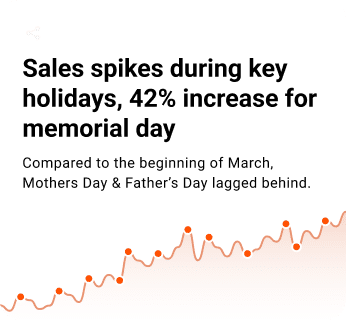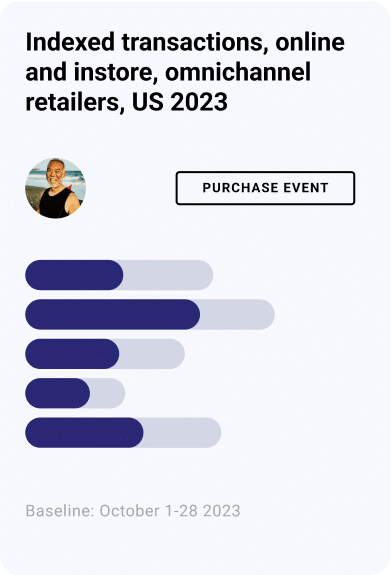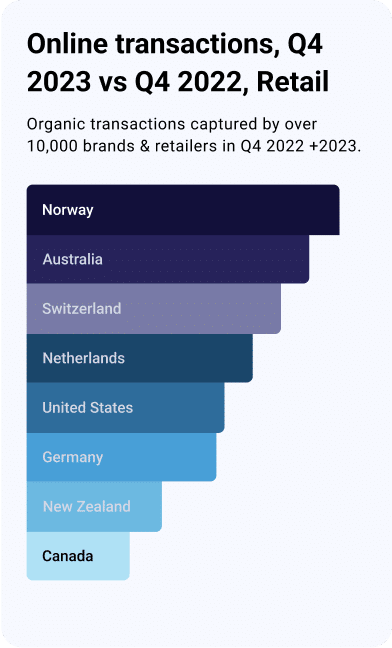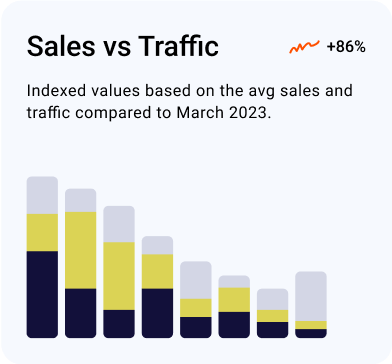Audience Targeting
What is audience targeting?
Quick definition: Audience targeting is the practice of dividing a broader audience of potential customers into smaller groups, based on criteria like demographics, interests, behavioral characteristics, intent signals and past interactions. This allows marketers to find users with similar interests or behaviors, like purchase patterns, increasing the likehood of engagement and conversin.
What is a target audience?
A target audience consists of the specific group of individuals who are most likely to engage with your product or service. By understanding factors such as age, interests, location, and behavior, marketers can focus their efforts on those who are most inclined to respond. This approach helps in crafting more relevant messages and maximizing the effectiveness of campaigns, ensuring you’re speaking to the right people at the right time.
So what’s the difference with audience targeting? While a target audience is a process of knowing who is you ideal customer, audience targeting is the process of clustering your audience based on different criteria to find your target audience. There are four common types of audience targeting:
Demographic targeting
Separates audiences based on data such as:
- Age
- Gender
- Income
- Education
For instance, if you sell skincare products, you might choose to show your ads to women, aged 35-65.
Geographic targeting
Identifies groups based on their location, including but not limited to:
- City
- Country
- Zip code
If you have brick-and-mortar locations for your skincare line, you could target audiences based on their location near the zip codes of each store.
Interest-based targeting (aka psychographic targeting)
Groups audiences based on common interests and attitudes. Using the same example, if you have an organic skincare line, you might want to target women who show an affinity for natural products or with an interest in eco-conscious companies.
Behavioral targeting
Behavioral targeting creates audiences based on their observed online behaviors. These often include:
- Categories and products browsed
- Products added to cart
- Products purchased
- Engagement with online ads
An example would be targeting people who have recently browsed or purchased skincare products.
Where do the audiences come from?
Identifying target audiences starts with data. The two most common types of data that companies use to build audiences are:
First-party data
This is data that the company owns directly. It can include customer lists (both online and offline), website visitors, and social media followers, to name a few. This data often lives in a CRM or POS system. The benefit of first-party data is that it’s accurate, free, and is an already-engaged audience that knows you and has shown an interest in you. The downside is that many companies simply don’t have enough of it to properly scale campaigns.
Third-party data
This is data that is aggregated and sold to companies by data providers—typically DMPs (data management platforms) or DSPs (demand-side platforms). The benefit of third-party data is its volume—companies can greatly expand the reach of their campaigns by purchasing it. The problem with third-party data is that, in an effort to address consumer privacy concerns, large companies like Apple and Google are doing away with third-party cookies that enable the tracking and collection of third-party data.
The ad tech industry is working now to identify how advertisers can effectively reach audiences in a post-cookie world. One possibility is cohort-based advertising, which groups people based on their common browsing behavior into large enough groups so that anonymity is maintained.
Common audience types
When you create an ad campaign, many platforms will provide you with pre-made audience types to choose from. Here’s a quick rundown of the most common types, and what they mean:
Affinity audience: This is in the interest-based/psychographic targeting category described above. Affinity audiences are groups of people with a demonstrated interest in, or passion for, a particular topic, cause, lifestyle, etc. Examples of affinity audiences include: baseball fans, cooking enthusiasts, and theater lovers.
In-market audience: This audience type is part of the behavioral targeting bucket and is a group of people whose behavior shows that they are actually searching for a product or service.
Lookalike or Similar audiences: These are audiences that are created by using machine learning to analyze the behaviors and characteristics of your customers or web/app visitors to identify commonalities and search for others who match those characteristics. It’s a tactic for reaching new people with a high likelihood of being interested in you.
Customer match: This an audience built from your existing offline or online customers. Typically, it involves onboarding your customer or sales lists and searching for matches online so that you can serve your store and web customers online ads.
Retargeting: These are audiences built from recent website or app visitors who haven’t completed a transaction yet.










